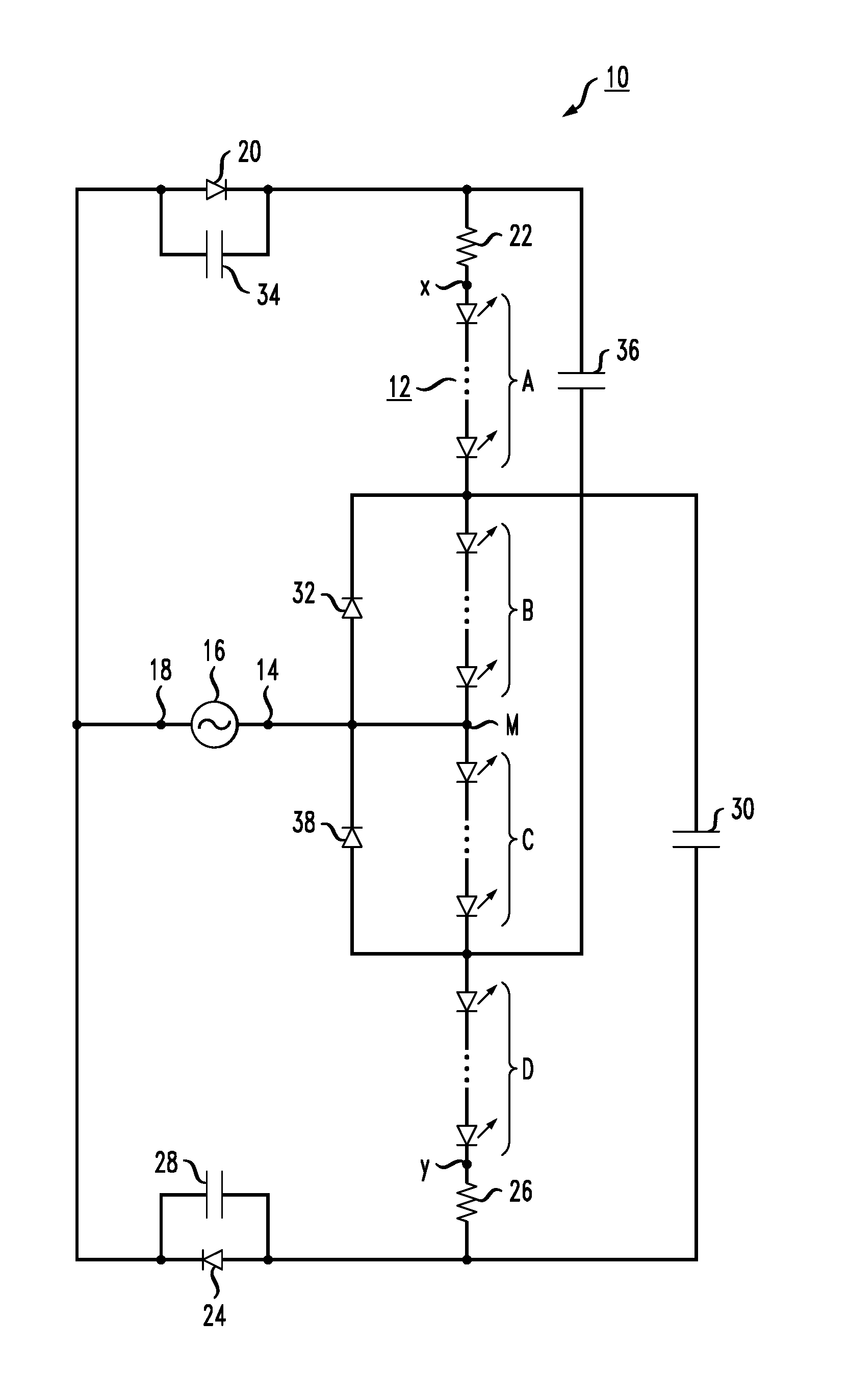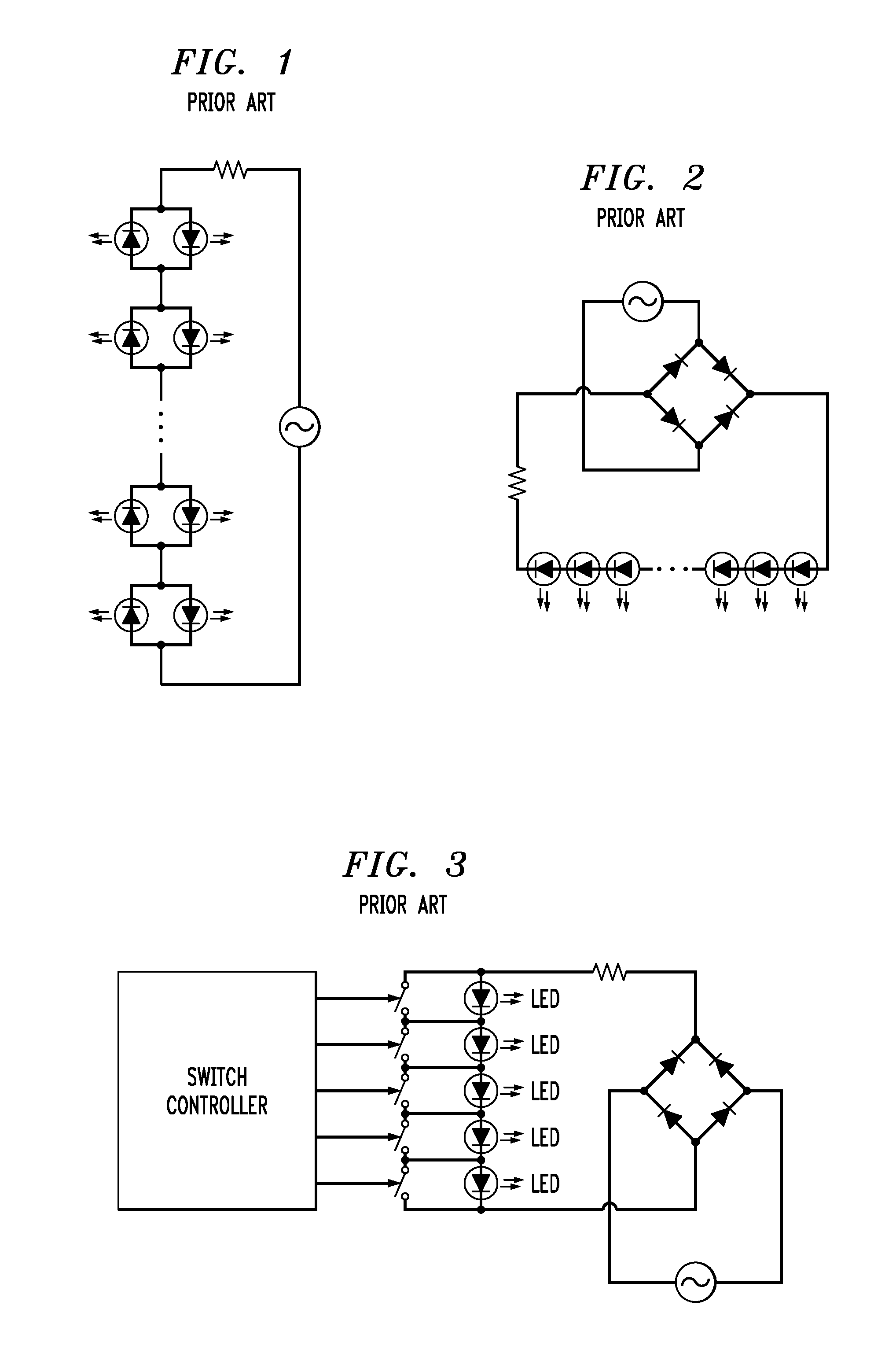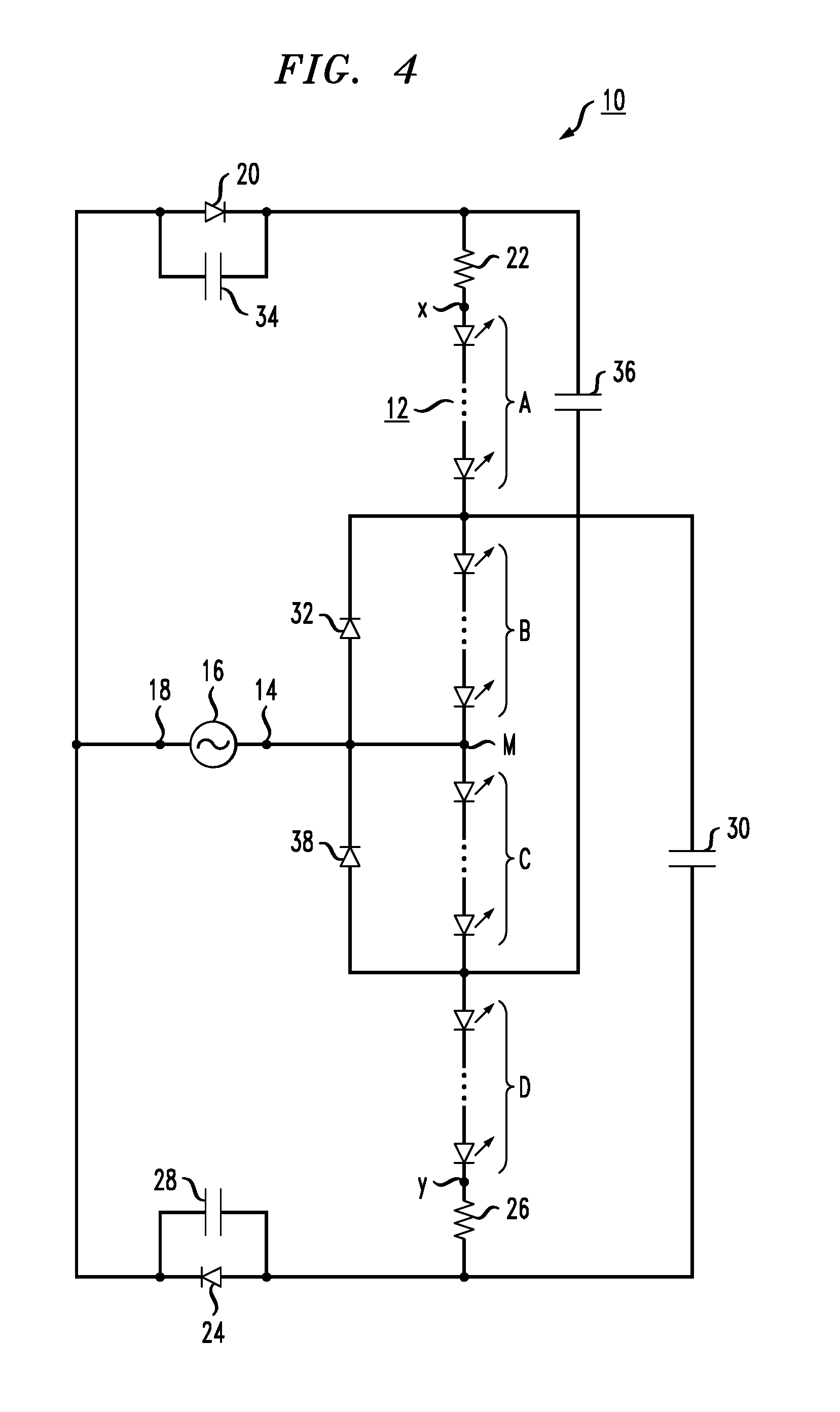Ac-powered LED light engine
a led light engine and led light technology, applied in the direction of electroluminescent light sources, electric lighting sources, semiconductor lamp usage, etc., can solve the problems of only producing light, stroboscopic effects, epileptic seizures, etc., and achieve the effect of improving the power factor, number and cost of leds used in this embodimen
- Summary
- Abstract
- Description
- Claims
- Application Information
AI Technical Summary
Benefits of technology
Problems solved by technology
Method used
Image
Examples
first embodiment
[0044]an AC-driven LED light engine 10 of the invention is depicted in FIG. 4. In this embodiment, a plurality of individual LEDs 12 are all connected in series in one continuous string. For purposes of operation, the string itself is subdivided into four substrings, shown as A, B, C and D in FIG. 4. Although it is convenient for manufacturing purposes for each substring to have the same number of individual LEDs, there may be some circumstances where it is advantageous to use different numbers of LEDs in each substring. In its most general form, LED light engine 10 can be configured to have any suitable number of separate LEDs within each substring.
[0045]Indeed, in this and all other embodiments the number of LEDs used in a substring will depend on the forward voltage of the specific LED devices being used, as well as the intended power line voltage (for US consumer applications, generally a 120V power line). By way of example only, the exemplary substrings of LEDs 12 as shown in F...
second embodiment
[0056]the invention is depicted in FIG. 8 as an LED light engine 40. Those components of LED engine 40 that provide the same functionality as LED engine 10 of FIG. 4 are shown by the same reference numeral. What is different in this particular embodiment is the inclusion of a pair of current-triggered switches that are placed across substrings B and C of LEDs 12 and are used to “short out” these substrings during the resistive-limited current portion of each half cycle. A first current-triggered switch 42 is disposed across substring B and is activated to bypass substring B by when the current through resistor 22 reaches its peak (positive) value. Similarly, a second current-triggered switch 44 is disposed across substring C and is activated to bypass substring C when the current through resistor 26 reaches its peak (negative) value. In this embodiment, therefore, substrings A and D are primarily used to supply LED current in the peak regions of the AC power line input, with substri...
third embodiment
[0062]the invention is shown as LED light engine 80 in FIG. 11. In this configuration, light engine 80 utilizes only a pair of LED substrings, denoted as substrings I and II in FIG. 11. At their midpoint M, a capacitor 82 is connected directly to a first terminal 84 of a power line connector 86. A pair of bias capacitors 88 and 90 is used to conduct displacement current directly back to an opposing terminal 92 of power line connector 86. These capacitors, together with capacitor 82, constitute the capacitive means responsible for producing the distinctive hump associated with displacement current in the output current waveform, as particularly shown in FIG. 12.
[0063]A set of diodes 94, 96, 98 and 100 comprises a full bridge rectifier arrangement that provides rectified power to the opposing ends of substrings I and II through resistors 102 and 104, respectively. In particular, resistors 102 and 104 constitute the resistive means for driving the LEDs. It is to be remembered, as menti...
PUM
 Login to View More
Login to View More Abstract
Description
Claims
Application Information
 Login to View More
Login to View More - R&D
- Intellectual Property
- Life Sciences
- Materials
- Tech Scout
- Unparalleled Data Quality
- Higher Quality Content
- 60% Fewer Hallucinations
Browse by: Latest US Patents, China's latest patents, Technical Efficacy Thesaurus, Application Domain, Technology Topic, Popular Technical Reports.
© 2025 PatSnap. All rights reserved.Legal|Privacy policy|Modern Slavery Act Transparency Statement|Sitemap|About US| Contact US: help@patsnap.com



